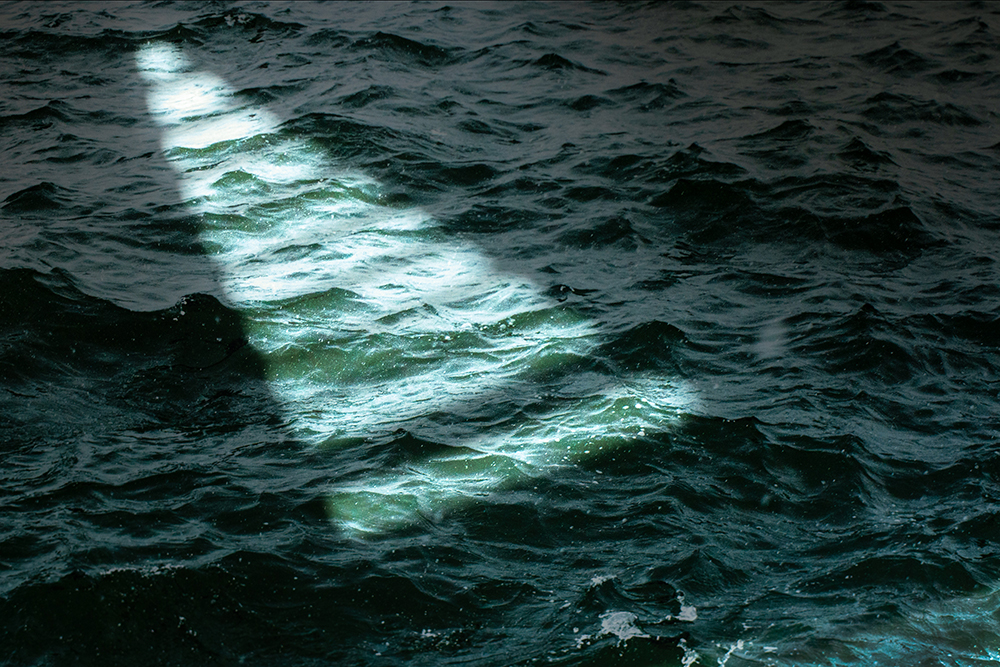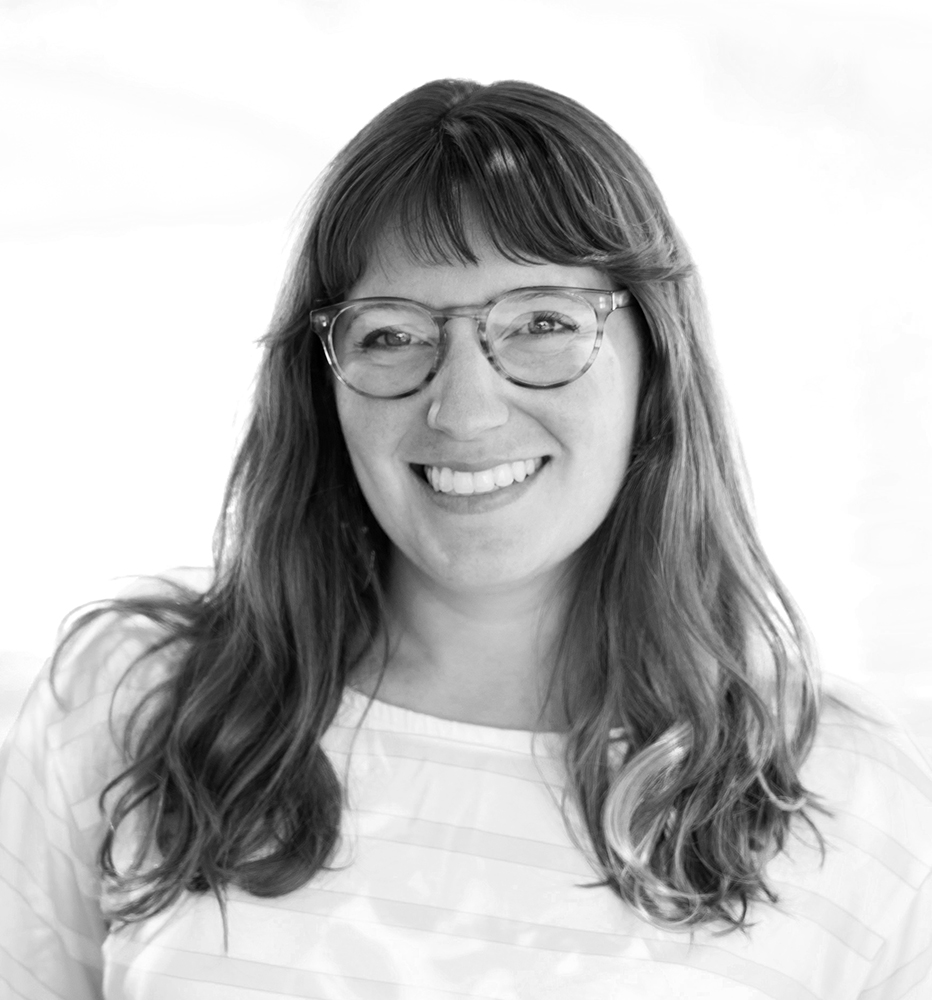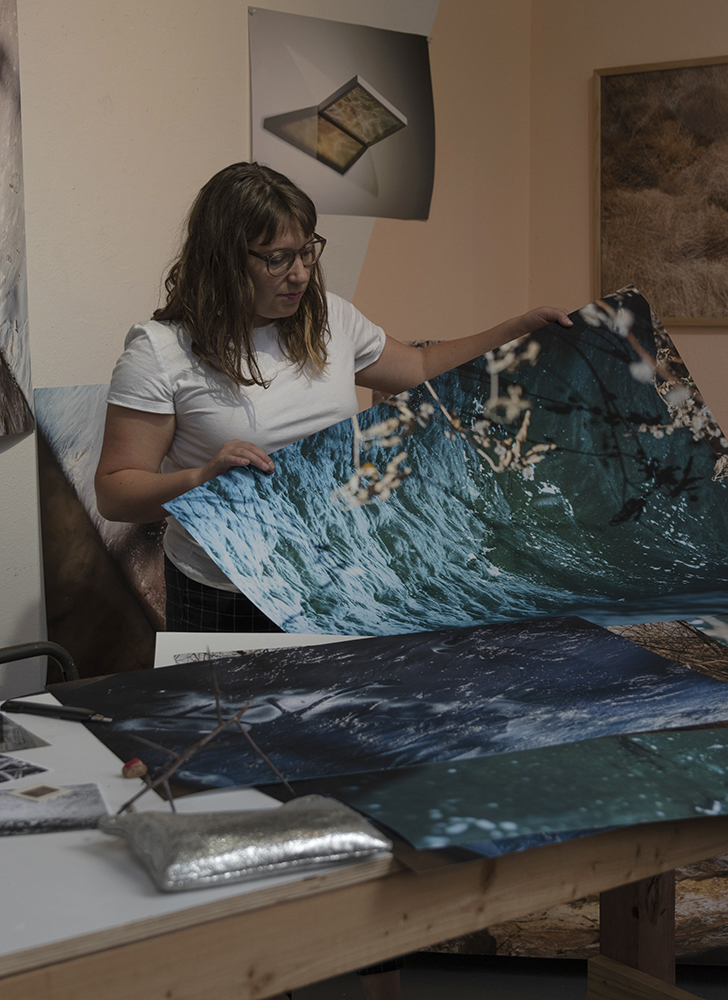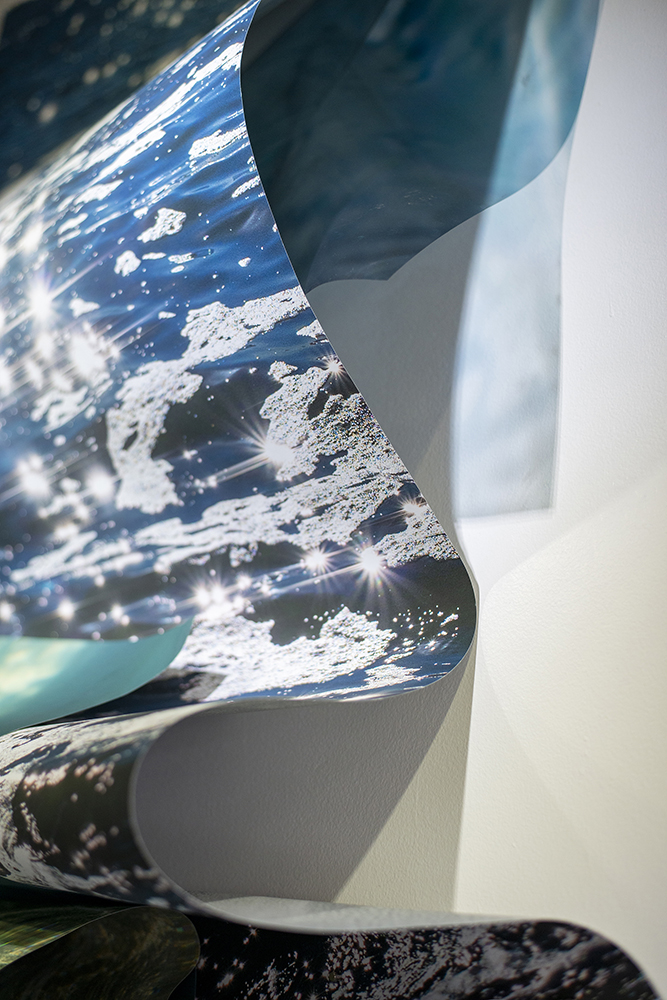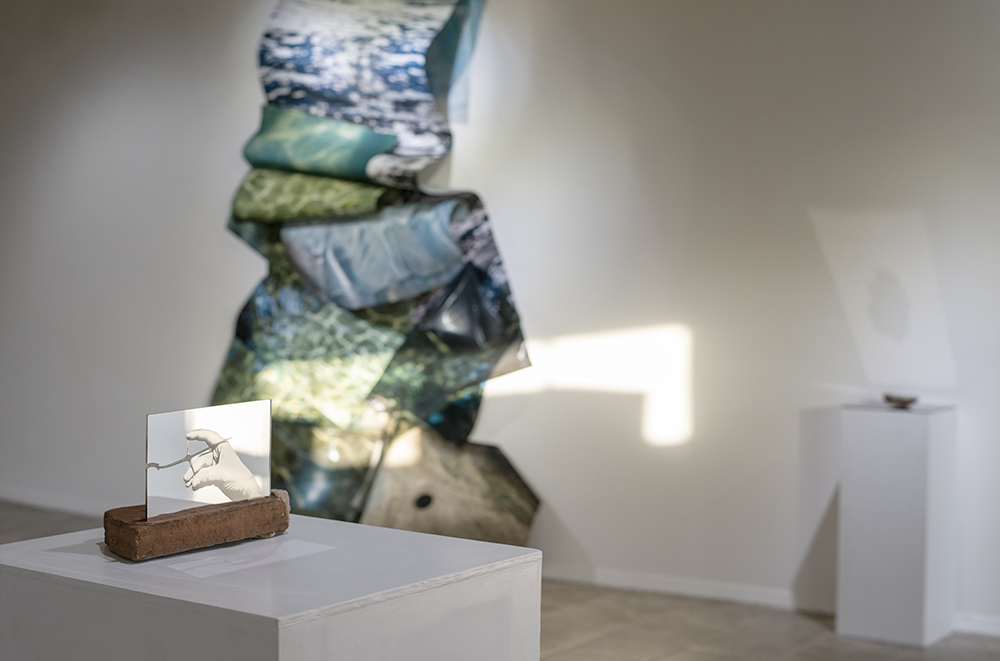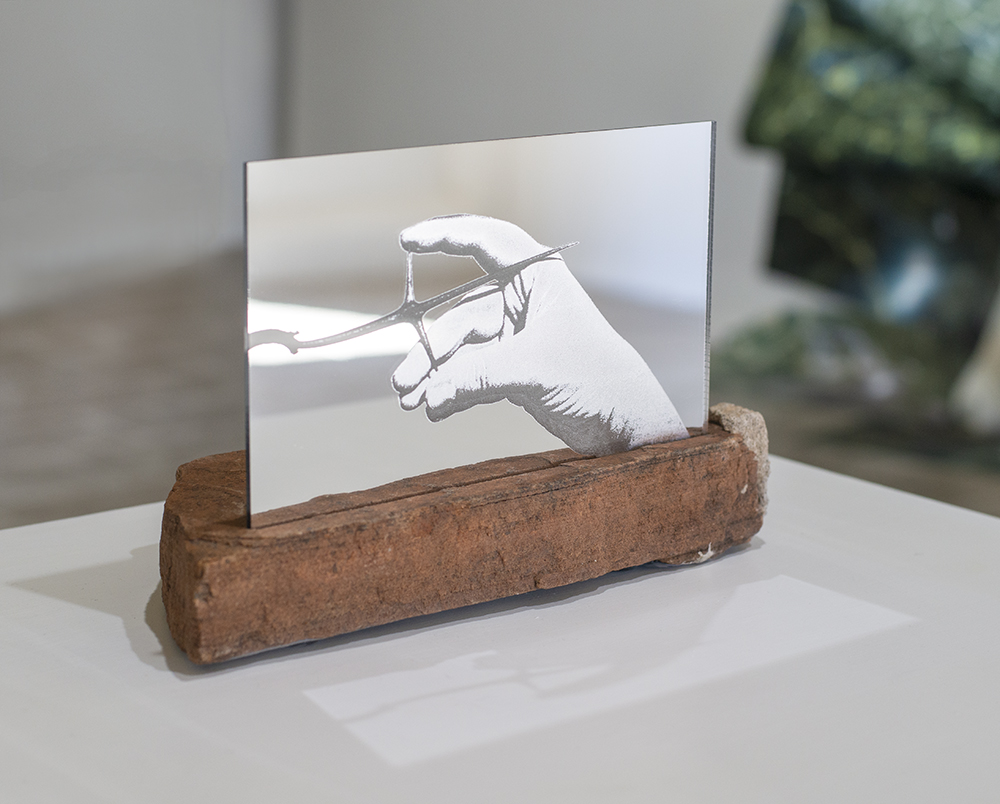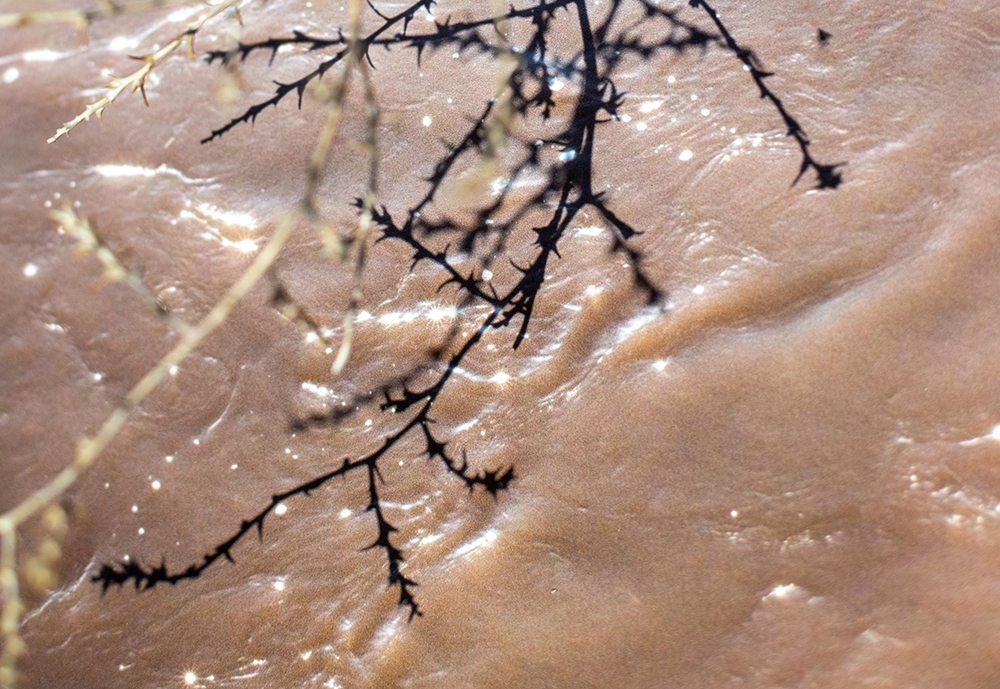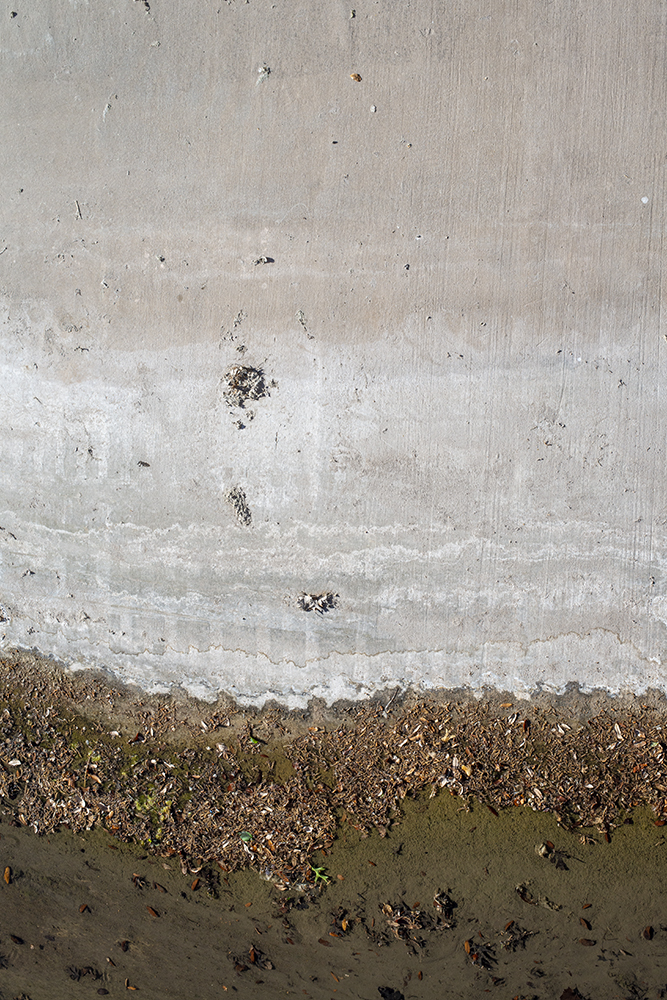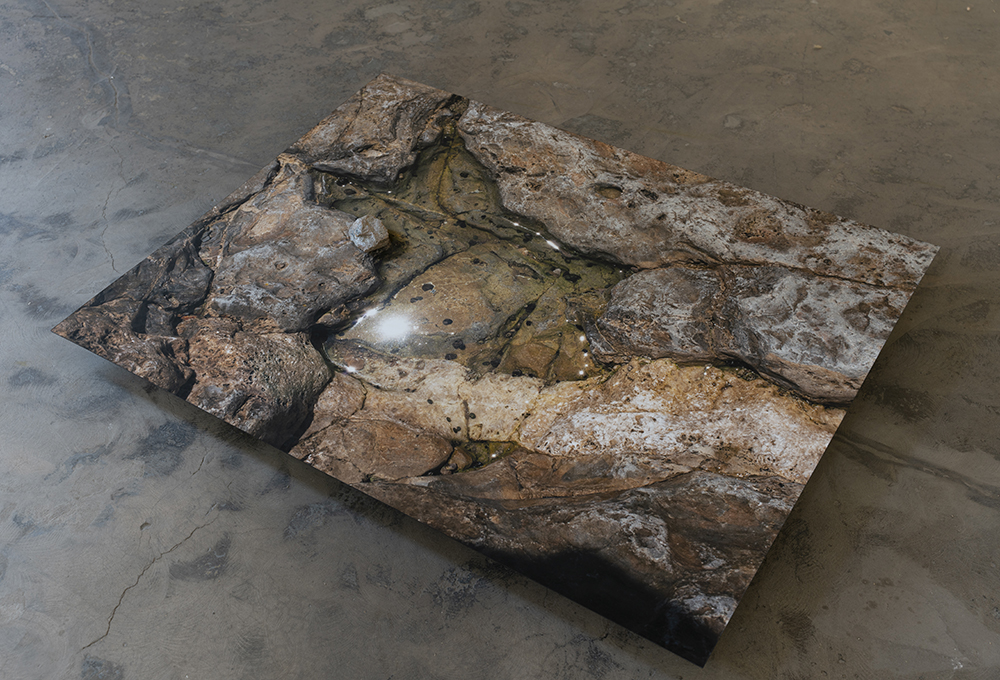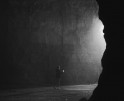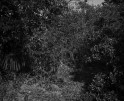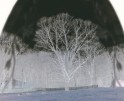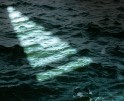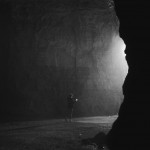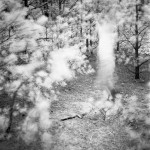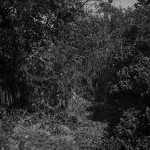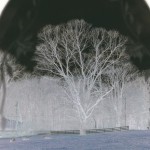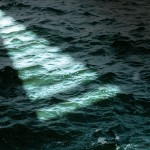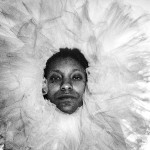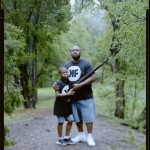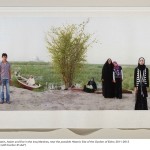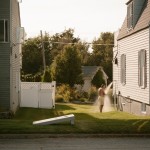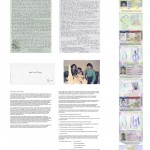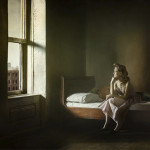The 2023 3rd Place Lenscratch Student Prize Winner: Anna Rotty
It is with pleasure that the jurors announce the 2023 Lenscratch Student Prize 3rd Place Winner, Anna Rotty. Rotty was selected for her project, spectrals from a shoreless sea, and is currently an MFA candidate and instructor of photography at the University of New Mexico. The 3rd Place Winner receives a $500 cash prize, a feature on Lenscratch, a mini exhibition on the Curated Fridge, and a Lenscratch T-shirt and Tote.
Anna Rotty’s spectrals from a shoreless sea pulled me in from the first picture in the sequence, “Search.” What was I seeing? A triangle of light on green-blue waves. Was it the light from a window shining on a photograph? Was it a photograph about light or about the sea? (It was definitely a photograph about making photographs.) The caption listed the components of the image as “photograph, sunlight, water.” I looked again. Was the photograph submerged in water, was this picture composed of what was pictured in the composition? As I moved through these images of movement and moment, there was more to question and to ponder.
Here are some of the other “elements” to be found in Anna’s captions:
water-soluble pigment print photograph adhered to dirt
laser-etched acrylic mirror, hand with honey locust thorn, landscaping sandstone brick
archival pigment print photograph, mounted, displayed on floor, elevated 6″ off ground, found rock and shell
As Rotty writes in her artist statement, “Using materials like transparencies and mirrors, I invite movement through space and physical engagement, helping us slow us down, pay attention, and shift perception, treating imagery of landscape as active rather than reiterating a passive gaze. ‘Tide Pool with Periwinkles & Suns,’ a photograph of the constantly changing inter-tidal zone, hovers horizontally a few inches off the ground, allowing us to gaze downward into this fluid micro-landscape. . . . I’m always looking for moments that access an emotional connection through light. I ask, how can we show land and water as fluid, reciprocal experiences, rather than as fixed representations?”
I was surprised by how available this project felt to me; the images mirror some of my own preoccupations and memories. I told Rotty it felt like I was seeing pages of an uncanny, enchanted visual diary from my own life, one that I could never have conceived of, much less had the vision, talent, patience, and self-possession to make. Isn’t that one of the gifts of being a reader of photographs? That they might seem as if they were created for you.
Water has always been a central part of my life, as idea and fact—as a Floridian and Virginian, as a lifelong swimmer and beach- and river-comber. Hunting for fossils and collecting shells, rocks, tree bark, seed pods is second nature. Hag stones and honey locust thorns are special to me; I have piles of them from southeastern Ohio. Another pile of hag stones in my house is from Bolinas, California. In Arizona, I picked up a tumbleweed and brought it home. Rotty collects these things too, but because she plays with scale, among other things, in her images, it’s hard to be sure if a hag stone, for instance, is a hag stone.
The honey locust thorn as object and image made me pause. A see-through mirror, a hand delicately holding a thorn (they’re so large) between forefinger and thumb. Something sharp that pricks. What is it that is troubling? The mysteries of water, the threat of its absence?
This summer has been one for travel, as well as one for contemplation about how we’ve managed, or rather mismanaged, being at home in the world. I was in New York the day the city was blanketed in orange fog from the Canadian wildfires, and I’m writing this while on a trip across Iowa with my husband, son, and old friends. The heat is supposed to be the worst on record, and the wildfires have been affecting air quality, though today is clear. The impacts of climate change, the myriad ways that humans have created the conditions for our own alienation from natural environments, has been much on my mind. As have been the ways that we find to soothe and protect ourselves. Aside from writing about Anna’s work, my other assignment has been to find places to swim as we drive (me) and bike (them) across the state. Last night we were in Storm Lake; tonight, Swan Lake just outside of Carroll, Iowa.
I was surprised by how doubly, triply resonant I found Rotty’s spectra, how ably they invoked reflection by being reflective and pointed to acts of seeing, and what can’t be seen, isn’t shown, by subverting seeing. (It’s hard to write in a manner that emulates in any way the way these works work.) These are photographs of invention and sleight of hand, performances that rely on light and paper, and water and stone, dirt and glass. In asking Rotty questions about her process, I sometimes felt like I was asking a magician where she stowed the rabbit or how the coin appeared from behind her ear. In studying the work, I learned more about looking and about both the limitations and ramifying potential of images as nature and artifice, document and talisman, structure and infrastructure. Her image making reveals what photographs can tell us, and more importantly, what they can’t. How easily we can be fooled unless we pay close attention. And even then, we only know we are fooled, not precisely how. In Anna Rotty’s spectrals from a shoreless sea, photographic representations are made to shapeshift, to recapitulate, documents into something as fluid and slippery and reflective as water itself—art.
 An enormous thank you to our jurors: Aline Smithson, Founder and Editor-in-Chief of Lenscratch, Educator and Artist, Daniel George, Submissions Editor of Lenscratch, Educator and Artist, Linda Alterwitz, Art + Science Editor of Lenscratch and Artist, Kellye Eisworth, Managing Editor of Lenscratch, Educator and Artist, Alexa Dilworth, publishing director, senior editor, and awards director at the Center for Documentary Studies (CDS) at Duke University, Kris Graves, Director of Kris Graves Projects, photographer and publisher based in New York and London, Elizabeth Cheng Krist, Former Senior Photo Editor with National Geographic magazine and founding member of the Visual Thinking Collective, Hamidah Glasgow, Director of the Center for Fine Art Photography, Fort Collins, CO, Yorgos Efthymiadis, Artist and Founder of the Curated Fridge, Drew Leventhal, Artist and Publisher, winner of the 2022 Lenscratch Student Prize, Allie Tsubota, Artist and Educator, winner of the 2021 Lenscratch Student Prize, Raymond Thompson, Jr., Artist and Educator, winner of the 2020 Lenscratch Student Prize, Guanyu Xu, Artist and Educator, winner of the 2019 Lenscratch Student Prize, Shawn Bush, Artist, Educator, and Publisher, winner of the 2017 Lenscratch Student Prize.
An enormous thank you to our jurors: Aline Smithson, Founder and Editor-in-Chief of Lenscratch, Educator and Artist, Daniel George, Submissions Editor of Lenscratch, Educator and Artist, Linda Alterwitz, Art + Science Editor of Lenscratch and Artist, Kellye Eisworth, Managing Editor of Lenscratch, Educator and Artist, Alexa Dilworth, publishing director, senior editor, and awards director at the Center for Documentary Studies (CDS) at Duke University, Kris Graves, Director of Kris Graves Projects, photographer and publisher based in New York and London, Elizabeth Cheng Krist, Former Senior Photo Editor with National Geographic magazine and founding member of the Visual Thinking Collective, Hamidah Glasgow, Director of the Center for Fine Art Photography, Fort Collins, CO, Yorgos Efthymiadis, Artist and Founder of the Curated Fridge, Drew Leventhal, Artist and Publisher, winner of the 2022 Lenscratch Student Prize, Allie Tsubota, Artist and Educator, winner of the 2021 Lenscratch Student Prize, Raymond Thompson, Jr., Artist and Educator, winner of the 2020 Lenscratch Student Prize, Guanyu Xu, Artist and Educator, winner of the 2019 Lenscratch Student Prize, Shawn Bush, Artist, Educator, and Publisher, winner of the 2017 Lenscratch Student Prize.
Anna Rotty lives on Tiwa land in Albuquerque, NM where she is an MFA candidate and instructor of photography at the University of New Mexico. Anna investigates water, light and infrastructure, informing her understanding of orientation and place. Anna’s work was recently shortlisted for the Frankenthaler Climate Art Award. She has been published by Southwest Contemporary, Humble Arts Foundation, Aint-Bad and Six Feet Photography. Anna recently exhibited her first solo show in New Mexico at Strata Gallery Santa Fe and has participated in group exhibitions at Form & Concept, the University of New Mexico Art Museum, San Francisco Camerawork and Incline Gallery in San Francisco. This fall, she had a solo show at Book & Job Gallery in San Francisco alongside the launch of her first book, Poll Work, recognizing the people behind the scenes making elections happen. This year, Anna is working as part of Collective Constructs, a group of artists and art historians responding with art and public visual scholarship to selected works from the permanent collection of the UNM Art Museum. The group poses questions as to how a collection is formed, and how can we contextualize what is unseen through sound, spoken word, and affect, through an American Indian Curatorial practice perspective. She is 2023 recipient of the Center for Regional Studies Fellowship and the Graduate Studies Dissertation award at UNM. Anna was selected to speak at the Society of Photographic Educators (SPE) national conference this March and aspires to continue teaching post graduate school.
Instagram: @annarotty
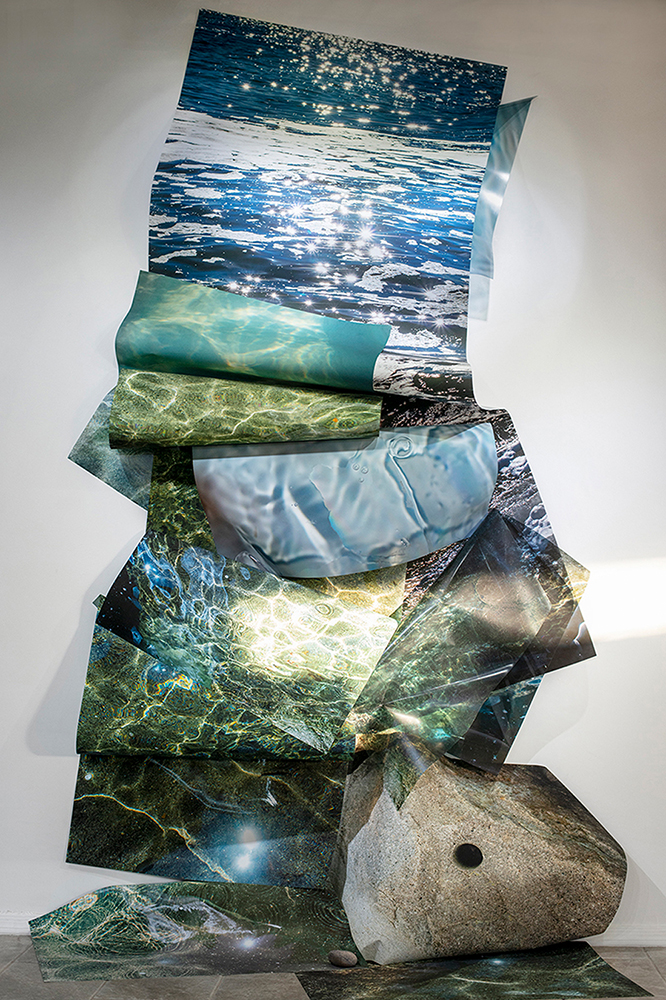
©Anna Rotty, Paradise Waterfall, installation of double-sided pigment print photographs on paper and transparency film, light, photographs of Albuquerque bathtub, Feather River, CA, Scituate, MA, 2022
spectrals from a shoreless sea
I strive for the feeling of lifting up a rock along the shore to see what world is living underneath. Spectrals from a shoreless sea embodies the pleasure and anxieties linked to water. Having grown up in the Northeast, I am amazed by the arid desert landscape of my new home in the Southwest. I’m fascinated by the Rio Grande as a fluid being with a complicated history. Last summer, I was shocked to witness the river dry up as far north as Albuquerque. This year it is overflowing. I have lived in places that flood often, or burn due to wildfire due to failed infrastructure. In response to these experiences, I have conversations with my father who works for the energy utility in Boston. Using his words and my personal reflections as prompts, I reconstruct photographs in the studio, or within the landscape, that investigate the systems, both natural and built, that transfer energy and water from place to place. The piece Paradise Waterfall looms 10 feet tall, referencing a memory of swimming below a waterfall located in Butte County, California, near a site of failed energy infrastructure, causing one of the largest wildfires yet. Using materials like transparencies and mirrors, I invite movement through space and physical engagement, helping us slow us down, pay attention, and shift perception; treating imagery of landscape as active rather than reiterating a passive gaze. Tide Pool with Periwinkles & Suns, a photograph of the constantly changing intertidal zone, hovers horizontally, a few inches off the ground, allowing us to gaze downward into this fluid micro-landscape through the rectangular frame of the camera. I’m always looking for moments that access an emotional connection through light. I ask, how can we show land and water as fluid, reciprocal experiences, rather than as fixed representations?
Alexa Dilworth: Your project is so imaginative and conceptual but also quite visceral. When I look at your work I think of it in almost documentary terms, as records of the shape of water. These images—I’ll call them images for the sake of this interview—but they are more (literally and figuratively) layered than that, have so many implications in terms of climate change and the environment as constructions/reconstructions of light, energy, water. And they are acts of memory.
Anna Rotty: Wow, thank you! I speak to this below quite a bit so won’t burden you with too much rambling here, but I use my practice as a way to connect and understand the environment I’m a part of and how it is changing. I want my images to feel bodily and seductive and active, like they can change depending on how someone moves around them, or how light interacts with them as a way to point to fluidity, change, and a more-than-human perspective of land. Sometimes something enticing and beautiful can make us look longer at what deserves our attention, like climate crisis.
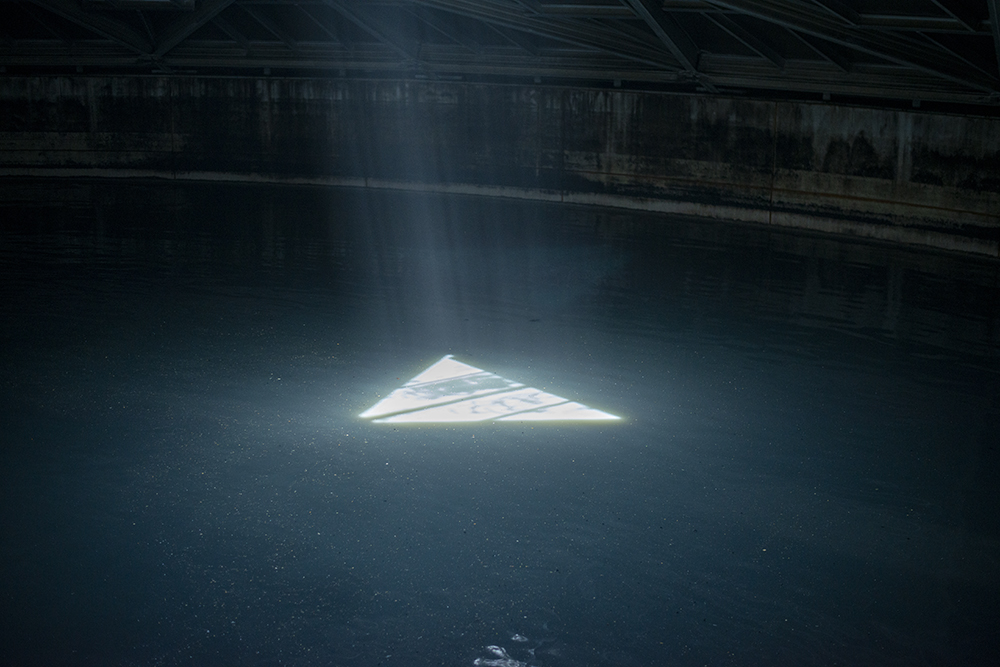
©Anna Rotty, As Above, So Below, archival pigment print photograph, 20×30, sunlight on wastewater, Bernalillo County Wastewater Treatment Plant, 2023
A.D.: I’m looking at your image titled “Pirachi” and have to ask, what’s a “pirachi”? This image seems like a good one to get at your process and how you think about the construction of your pieces. So it’s a photograph of a (torn) photograph resting on top of another photograph that’s framed (but occluded). Is there a separate image directly under the hole or . . . ?
A.R.: Unfortunately, I’m not sure where the word originated, but Pirachi is a name of a place in my hometown that isn’t marked on a map—a spot along the shore where people jump off a rock into the high tide. It’s stuck with me, because it’s quite dangerous when the tide is low; you have to time the jump just right as a wave comes in.
I wish I could show you a video of this piece, because this image is definitely more documentary than others. You nailed it though, the top piece is a photograph of a photograph of the ground that I submerged in my bathtub, letting the water run onto the paper, which broke the print apart over time. This is just one moment of its de-construction. The broken hole shape reminded me of Pirachi. Behind the loose print it is a framed photograph of another shoreline rock that was submerged in my bathtub. I don’t want to give it away, but if you were tempted enough you could peel it back and you’d see another portal behind it. I like playing with that tension that memory alludes to: what’s there and what’s hidden? How do these two memories relate and become something new? One place is more protected; the other is subject to the environment, like dust, water, or people’s intervention should they take the invitation to look beneath it. The reverse is painted in neon so it reflects a color onto the wall behind it; the piece temporarily activates the space it lives in as well.
Since you asked, I did some deeper digging into the word. I wish I knew more about its origin but there is a Sanskrit word, prachi, that means “east, first rays of sun, morning,” and in this location, that makes a lot of sense.
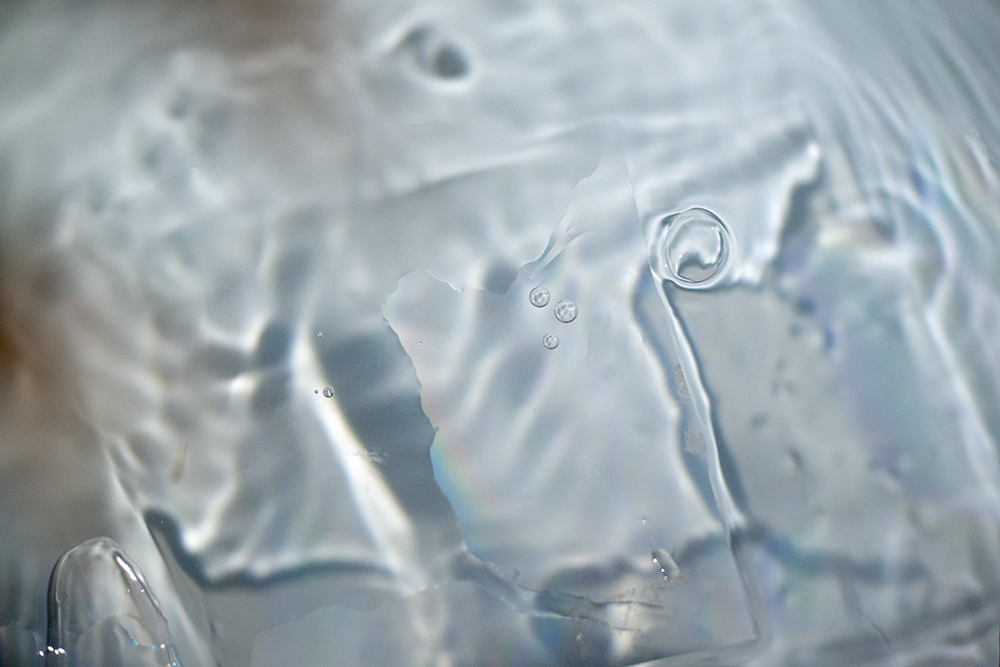
©Anna Rotty, Beneath the Surface, archival pigment print photograph, 24×36, bathtub water and light, 2022
A.D.: Where are you from originally? I was moved to see the honey locust thorn as talismanic object—from a familiar kind of bottomlands and creek bed—and the hag stones, which have their own sacred meanings. But I grew up swimming in lakes and the ocean, so tell me about your own experiences of being in/with water.
A.R.: I grew up in Scituate, Massachusetts (Wampanoag land), along the coast and spent a lot of time swimming in the ocean, exploring the shoreline, and looking for creatures under rocks in tidepools. My parents still live there, so I’m lucky to return to those familiar bodies of water often. It’s seasonal there, so it’s completely different in summer and winter, which I love. The houses close to the shore are subject to flooding during storms; it feels like there is so much power and agency to the ocean and tides. I love that you saw hag stones in the work! Many of the images of holes I see as portals and places of opportunity for magic to happen, but these holes are manmade ones from old infrastructure along jetties in my hometown. I used to play on the jetties and loved how the rocks got covered up and then revealed again with the tides to expose sea life, like mussels and barnacles. After college (I went to University of Massachusetts Amherst for undergrad), I moved to San Francisco and ended up in a house with a bunch of friends in the Outer Sunset neighborhood, which is close to Ocean Beach and often covered in fog. I spent a lot of time walking and swimming there. The Pacific is so different from the Atlantic, but I get such a feeling of relief and sense of self when I’m immersed in the water. Now that I live in New Mexico (I moved to Albuquerque to pursue my MFA in 2021), the Rio Grande is the body of water I’m visiting and thinking about most. I’m still getting to know the Rio and its complexities. I visit the Rio often, with and without my camera, but have also been visiting the archives at the Albuquerque Museum Photo Archive or the Center for Southwest Research at UNM, where there are huge bodies of photographic and written histories about the river. My dad works for the energy utility in Boston that distributes water, gas, and electricity to people’s homes, and he always remarks on how amazing it is to have drinking water right out of the faucet. I think about these infrastructures even more since I moved to the desert. As I learn more about how the river has been controlled, for and by whom, my interest grows even stronger. As much as there is pleasure and beauty in water, it can also generate a lot of anxiety in thinking about how we engage with it and treat it. The desert in New Mexico used to be a sea, and I love to reflect on how much has changed over such a long period of time, and it’s horrifying to see how much change has happened so quickly due to human engagement with the land.
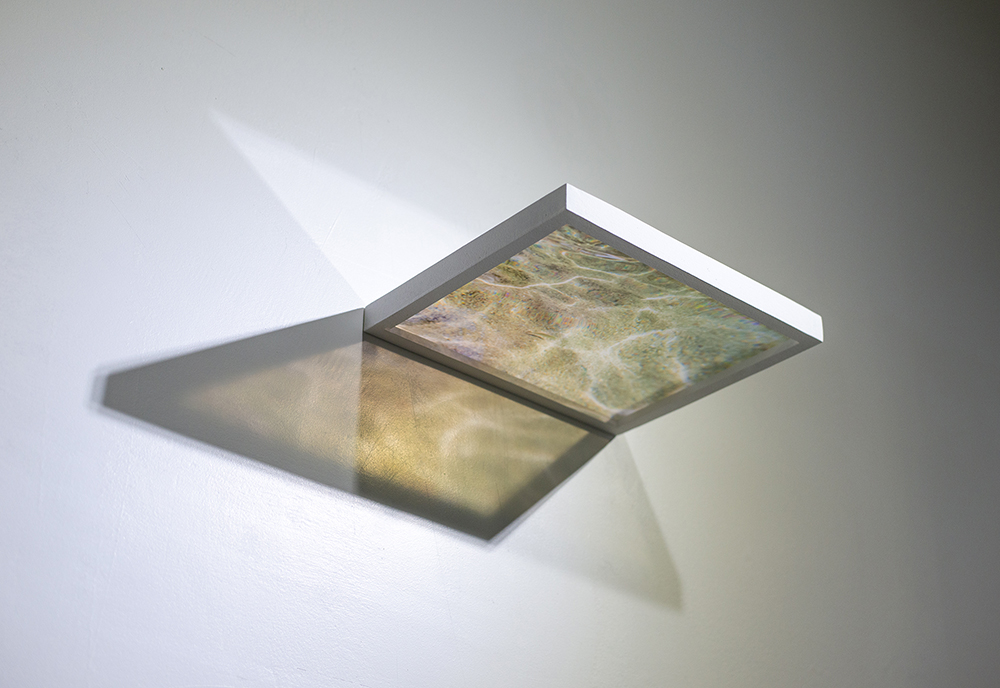
©Anna Rotty, Oasis (for Emma), handmade frame hung cantilevered from wall, photograph on transparency film, light source, 2022
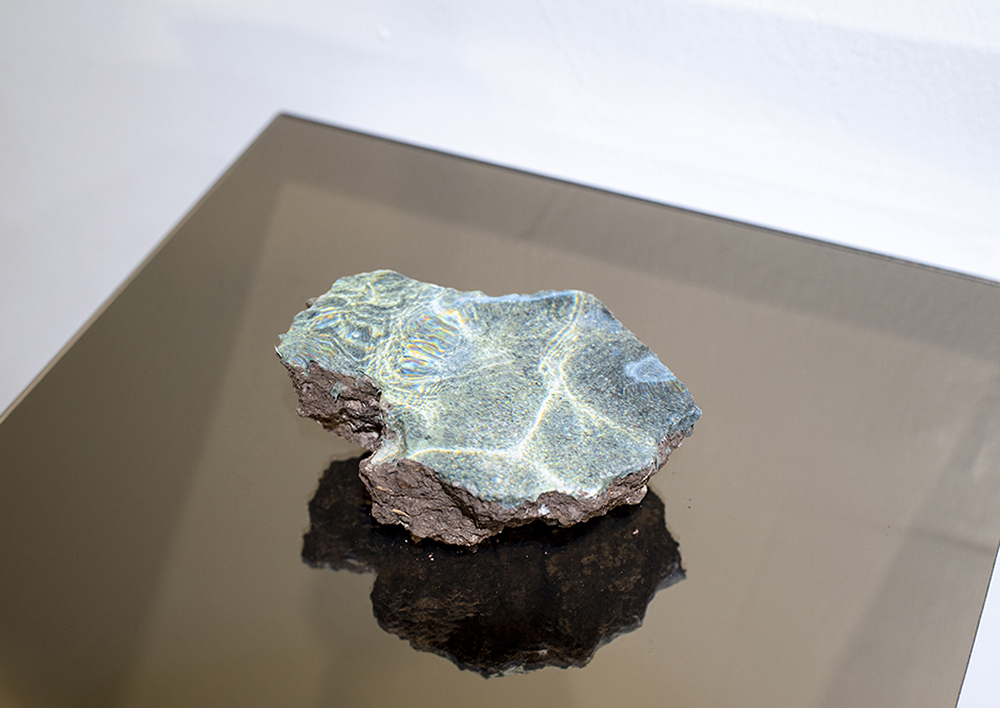
©Anna Rotty, Nothing without each other, water-soluble pigment print photograph adhered to dirt collected from along Rio Grande, Albuquerque, NM, reflective acrylic, 2022
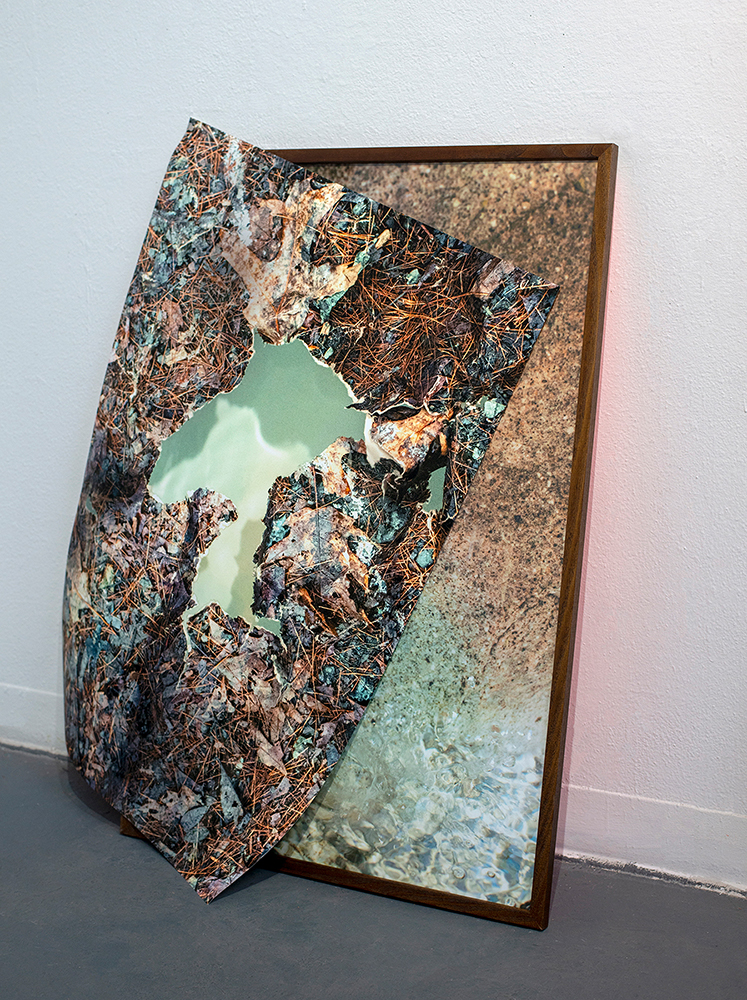
©Anna Rotty, Pirachi (Glades), archival pigment print concealing framed archival pigment print, neon painted reverse, 2022
Posts on Lenscratch may not be reproduced without the permission of the Lenscratch staff and the photographer.
Recommended
-
The 2023 Lenscratch Student Prize Honorable Mention Winner: Tristan SheldonJuly 30th, 2023
-
The 2023 Lenscratch Student Prize Honorable Mention Winner: Hannah NigroJuly 29th, 2023
-
The 2023 Lenscratch Student Prize Honorable Mention Winner: Elena Bulet i LlopisJuly 28th, 2023
-
The 2023 Lenscratch Student Prize Honorable Mention Winner: Paola ChapdelaineJuly 27th, 2023
-
The 2023 3rd Place Lenscratch Student Prize Winner: Anna RottyJuly 26th, 2023

